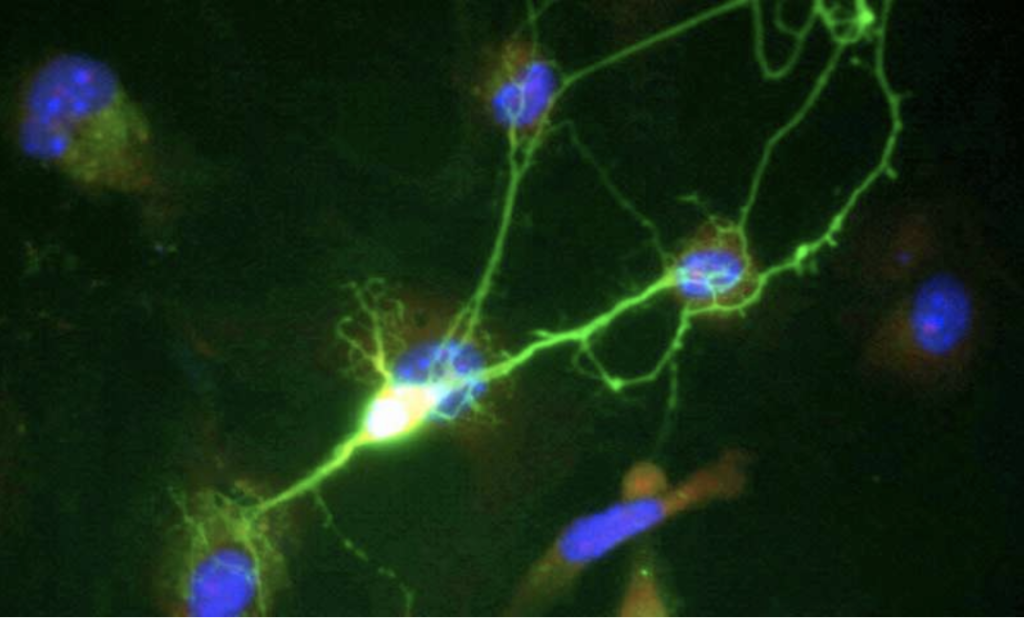#ScienceSaturday posts share relevant and exciting scientific news with the KAND community. This project is a collaboration between KIF1A.ORG’s Research Engagement Team Leader Alejandro Doval, President Kathryn Atchley and Science Communication Director Dr. Dominique Lessard. Send news suggestions to our team at impact@kif1a.org.
Save the Date for “The Gene”
Have you marked your calendar yet? Join us virtually from the comfort of your own couch for the premiere of “The Gene,” a Ken Burns documentary airing on PBS April 7 8/7c in the U.S. Learn about the power of science & the relentless KIF1A community.
The Gene: An Intimate History
Tune in or stream Tuesday, April 7 at 8/7c on PBS
Recent KIF1A-Related Research
Omics Approach to Axonal Dysfunction of Motor Neurons in Amyotrophic Lateral Sclerosis (ALS)
This review discusses multiple avenues for disease-generation in Amyotrophic Lateral Sclerosis (ALS). This paper isn’t focused on KIF1A or KAND—so why are we interested? While not the same disorder, ALS and KAND do share some overlapping symptoms. The more we can learn from other disorders, the more information we have to consider when thinking about KIF1A and KAND. Most notably, this review discusses the role of KIF5A in ALS. KIF5A is a kinesin motor protein and a newly identified gene that plays a role in ALS. A number of different mutations have been observed in KIF5A in both the N-terminal motor domain (where the majority of KAND mutations are located in KIF1A) and in the C-terminal domain (where most kinesin motors bind to cargo). This paper does briefly mention KIF1A, but only as a comparison between KIF5A and KIF1A, and is not connecting KIF1A to ALS.
Rare Disease News
Understanding how protein tau moves between neurons yields insight into treatments for neurodegenerative diseases
Tau is a protein found on the microtubule roadways that molecular motors, like KIF1A, use to transport cargo in neurons. The pathological, or disease-causing, state of tau is most commonly associated with neurodegenerative diseases such as Alzheimer’s disease and chronic traumatic encephalopathy (CTE). This article summarizes a recent advance in understanding how the pathological state of tau is spread between neurons in our brain. However, in a non-disease state, tau plays an important role in keeping our neurons and nervous system functioning properly. One role of tau is to regulate the “flow of traffic” inside of neurons by acting as an obstacle on the microtubule. In fact, recent work out of the Ori-McKenney Lab (University of California Davis) and the Berger Lab (University of Vermont) has started to define the relationship between KIF1A and tau. We look forward to hearing more from these labs (and others) in the future! Click the image below to read more.
Neurology Reviews and NORD Publish Annual Rare Neurological Disease Special Report
Frontline Medical Communications (FMC) and the National Organization for Rare Disorders (NORD)® have released the 6th annual Rare Neurological Disease Special Report—the largest and most comprehensive to date! This publication extensively covers advances in rare disease research, therapeutics, trends, and technology from the past year. The full report can be found here.
“…this year’s issue features a unifying theme of the critical nature of multi-national, real-time collaboration that bolsters the burgeoning diagnostics, treatment, and patient advocacy advances within the universe of rare diseases.”
Antisense oligonucleotides for neurodegeneration
This short review article walks us through the basics of antisense oligonucleotide (ASO) therapeutics. Topics discussed: ways that ASOs can modulate target gene expression, ways to administer ASOs, and recent advancement of ASO therapies in diseases like Huntington’s Disease and ALS.
PXT3003 Designated Promising Innovative Medicine in UK for CMT1A Treatment
PXT3003 is a drug designed to treat Charcot-Marie-Tooth (CMT) type 1A, the most common type of CMT. Specifically, this drug is predicted to lower abnormally high protein (PMP22) levels in CMT1A as well as influence the formation of myelin, an insulating sheath around the axons of certain neuron types. In the U.K., the MHRA has given PXT3003 a promising innovative medicine designation, meaning that this drug is likely to “offer major therapeutic advantages for CMT1A patients and also a promising candidate for the U.K.’s early access to medicines scheme (EAMS).” In the U.S., PXT3003 has been classified as an orphan drug, or a biological treatment designed to treat rare diseases. PXT3003 has also been given a fast track designation, which is defined by the U.S. FDA as “a process designed to facilitate the development and expedite the review of drugs to treat serious conditions and fill an unmet medical need.”
NeuBase Therapeutics Announces Positive, Preclinical Data Validating its Novel Genetic Therapy PATrOL™ Platform
This week, NeuBase Therapeutics, Inc. announced positive preclinical data for the NeuBase peptide-nucleic acid (“PNA”) antisense oligonucleotide (PATrOL™) platform. This type of ASO therapy is aimed at treating Huntington’s disease and myotonic dystrophy type 1.
“Given the activity and broad biodistribution observed in these studies and the potential for easier target definition, I believe the PATrOL™ technology may have a potent impact on the future of drug development and treatment of genetic diseases.”


